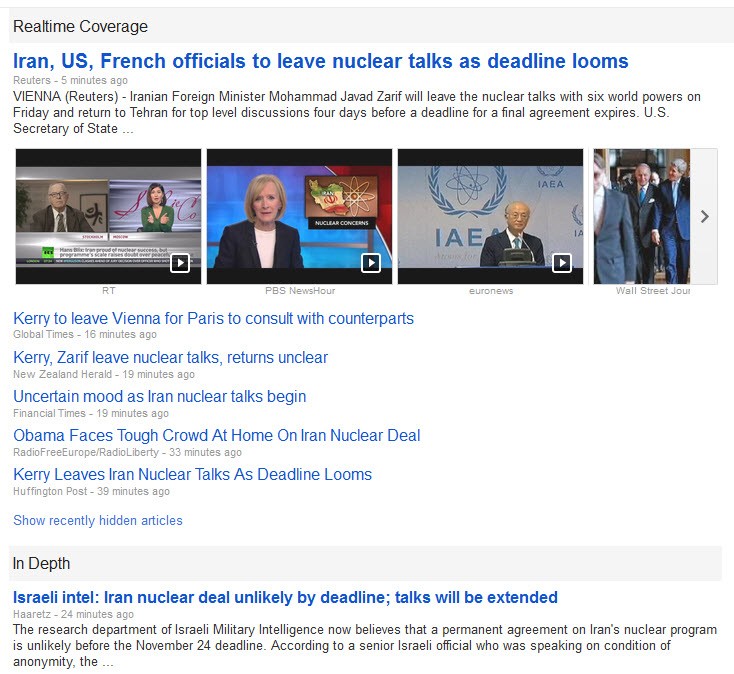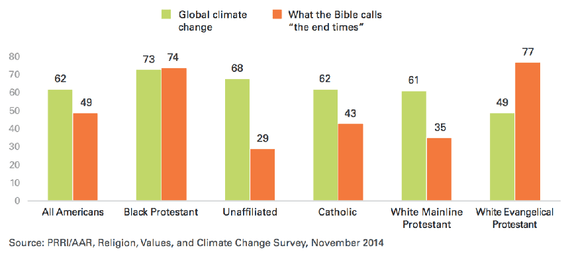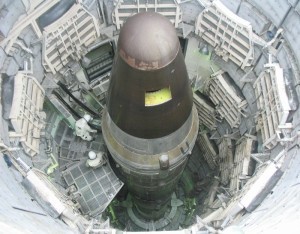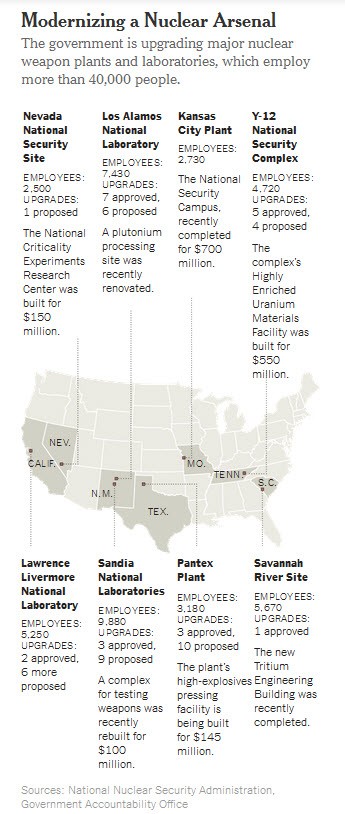This week, before the Thanksgiving holiday in the U.S. and beginning of the Christmas season, while the stock market is at historic highs and recent mid-term elections are producing after-election blues, vitriol, threats and increasingly polarized politics as the 2016 presidential election season arrives early…
Question of the week – @LewisPugh: What is worse: Giving up too quick or staying too long?
Having mulled that over, we move right on to the followup question of the week — will or won’t the extended negotiations between the P5+1 and Iran produce an agreement? The clock is ticking — and the consequences could be immense of a failure to reach an agreement. The world’s news organizations, as of Friday, November 21, are producing thousands of articles, opinions and editorials, and the consensus seem to be that if a deal is not arrived at before the deadline, then the talks will be extended. In the background, as we end our report this week below, looms nuclear weapons modernization by the U.S. and Russia, China and a new round of proliferation raises serious concerns.
If the talks do not produce an agreement, then what?
Some of ‘the options’ in contingency planning… Low-intensity conflict with cyberwar, sabotage, drones, provocations, tactical ‘surgical strikes’, expanded regional war, all out war…
Iran expands energy cooperation with China … Iran draws closer to Russia
Will Congress kill Iran nuke deal?
Americans support war against Iran if…
Going against Netanyahu, 84 percent of US Jews favor Iran nuclear deal
The dangers here cannot be adequately assessed… In strategic terms, the Iran-China-Russia connections cannot be dismissed and the global geo-politics of new international alignments are coming into view.
-=-=-=-=-=-=-=-=-=-=-
Moving from Iranian nuclear agreement news to Israeli news
How ‘the left’ sees Gaza’s conditions (how many in the Mid East, Europe and much of the world see Gaza’s conditions)
-=-=-=-=-=-=-=-=-=-=-
Leaving Israel and Gaza for more complications
Deep fear, the terror, the terror: a profile of psychosis
Surveillance, Watching/Listening and the NSA
Congressional ‘oversight’ of the NSA and mass surveillance
-=-=-=-=-=-=-=-=-=-=-
Switching gears
Fail safe in the old days had to do with command and control, redundancy, rogue actors, now it’s looking at protecting against AI robots out of control…
Warnings of the danger of AI
Be careful, be very careful
Artificial intel is the biggest existential threat says Elon Musk
Perhaps reflect about next gen ‘smart’ bombs (and battlefield ‘Skynet’)
-=-=-=-=-=-=-=-=-=-=-
Onto environmental security issues and other ‘existential’ questions
Is this accurate? Just 90 companies caused two-thirds of man-made global warming emissions
China’s air crisis was a major driver behind the landmark US-China climate deal announced last week – The Atlantic’s James Fallows made this point yesterday, Wednesday, writing that “when children are developing lung cancer, when people in the capital city are on average dying five years too early because of air pollution, when water and agricultural soil and food supplies are increasingly poisoned, a system just won’t last.”
Fallows explains how closely tied China’s environmental crisis is to the fortunes of the Communist Party: On the Politics of China’s Environmental Crisis
-=-=-=-=-=-=-=-=-=-=-
Senate GOP steeling for battle against EPA
-=-=-=-=-=-=-=-=-=-=-
While politics plays out on the climate front, the military prepares …
… while nearly half of Americans believe that climate change is a sign of the “End Times” and the “Apocalypse“
-=-=-=-=-=-=-=-=-=-=-
Can we talk?
Troll: One who posts a deliberately provocative message … with the intention of causing maximum disruption and argument. — Urban Dictionary
If you haven’t been to any Comment thread accompanying any online article that touches upon global warming or climate change, you’re missing the thrill of trollers, lurkers, troll denial and trolling aggravation.
A troll war on the web is playing out in the clash of climate change believers and non-believers and though the non-believers may be a small minority, they clearly make up for their numbers in their flaming. But can we talk?
Is there a substantive difference between a ‘denialist’ and a ‘skeptic’ when it comes to climate science? Since the preponderance of scientific opinion affirms that human-induced change is occurring, why are the voices of denial/skepticism so LOUD as they trample online threads in almost every venue?
Powerful, well-financed rightwing think tanks and lobbying groups lie behind much of the information circulated by climate denialists. There is not much reasonable doubt as to the findings of science on the subject. As a result of human activities, large-scale climate change is under way and, if it goes on unchecked, it will fundamentally alter the world humans will have in the future. — John Gray on Naomi Klein
A climate debate, to the extent it takes place, typically involves strident, angry denialist attacks on climate science. Denial goes beyond skepticism. Skeptics of climate science facts, assumptions and theories, in scientific circles are typically welcome into the debate if they are acting in good faith, that is, questioning prevailing scientific paradigms within the scientific method. This is how scientific knowledge advances forward (“paradigm shifts” – per Kuhn).
So there’s something to be said for skeptics. On the other hand, there are ‘Inhofers’…
-=-=-=-=-=-=-=-=-=-=-
Science, Inhofe & God
Senator Inhofe, in line for the chairmanship of the Senate Environment and Public Works Committee, cites Genesis 8:22 to claim that it’s “outrageous” and arrogant for people to believe human beings are “able to change what He is doing in the climate.” Along with his frequent claim that human-influenced climate change is impossible because “God’s still up there”, and his claim that climate change scientific positions are the “greatest hoax ever perpetrated on the American people”, the Senator from Oklahoma is sure to challenge the American people.
Genesis 8:22 — New King James Version
“While the earth remains,
Seedtime and harvest,
Cold and heat,
Winter and summer,
And day and night
Shall not cease.”
The coming of the Senator and Republican vision on science and the environment over the next two years will set the stage for a significant and, most likely, consequential voter turnout in 2016…
Sidebar: Sen. Inhofe of the Senate Armed Services Com’t is engaged heatedly in nuclear weapons policy positioning in addition to his thoughts on environmental issues. Recently he offered It’s Time to Stop Putin’s Nuclear Arms Buildup – Foreign Policy, Sept 2014
-=-=-=-=-=-=-=-=-=-=-
Leaving behind the Senator’s beliefs, we move on with hope for the future…
Although the season of the golden Aspens in the Rockies has ended, the Aspen Strategy Institute is looking at “Redux” Cold War between the U.S. and the re-constituted Soviet state, Russia, under its former security state/KGB officer/national security advisor/now President, Vladimir Putin.
Strobe Talbott, former roommate of Bill Clinton and later President Clinton’s Deputy Secretary of State with the Soviet-Russia portfolio (and first-hand view of the Soviet-to-Russian transition) has just presented an important talk that gives a revealing view of how he (and the mainline Democratic party foreign policy) sees the state of U.S./Russian relations.
While Russia’s continued cooperation with the U.S. continues on multiple fronts, in Iraq, in Iran negotiations, in supplying the ISS, in dealing with G-20 issues, in attempting to find European solutions to energy issues, and toward geo-political accommodations including on Ukraine’s future and EU and NATO engagement, former Secretary Talbott sees areas of serious strife.
Here are excerpts, bullet points recently delivered by Talbott at the Aspen Institute in the Ernest May Lecture:
♦
- “Redux,” which is Latin for “lead back,” as in “lead back into the past.” That’s what Russia’s government is doing in two respects: it’s negating and reversing the reforms of the recent past—the late 1980s and ’90s—while reinstating key attributes of the preceding old regime as defining features of an atavistic new regime.
- Had Yeltsin and his fellow post-Soviet leaders set off an irredentist free-for-all in the post-Soviet space, stretching across 11 times zones with tens of thousands of nuclear weapons in the mix, it would have been a world-threatening catastrophe. On a more specific and less apocalyptic level, it would have been impossible to persuade Ukraine to turn over its Soviet-era nuclear arsenal to Russia, especially if Yeltsin’s opponents had succeeded in their demand that Ukraine turn over Crimea as well.
- Russia’s—and Yeltsin’s—relations with the West were still stressed almost to the breaking point by the mayhem in the Balkans, particularly during its Kosovo phase in 1999. That was for multiple reasons: NATO went to war for the first time; it did so in disregard of Russia’s opposition; its principal target was the capital of a nation with a Slavic Orthodox majority and, therefore, with strong historical and cultural ties to Russia; and the operation’s beneficiaries were Muslim secessionists inside Serbia. That led many Russians at the time to analogize Kosovo to Chechnya. They felt they were impotent bystanders watching a preview of what NATO would someday do to dismember Russia itself.
- I asked for an urgent meeting with Yeltsin. I was told he was “indisposed.” We knew what that meant. We settled for a meeting with his national security advisor, Putin. It was, at the time, a creepy encounter—and all the more so in retrospect. His manner was superficially cool, professional, and courteous, but iciness and controlled contempt were just under the surface. What really struck us was the aplomb, smugness, and brazenness with which he lied.It was spectacular—and, I’d add, reckless.
- Eight weeks later, Yeltsin stunned the world by promoting Putin to prime minister and designated successor, thus setting him up to be Bill Clinton’s Kremlin counterpart. During the interregnum, Putin did everything he could to burnish his law-and-order image, including identifying himself with Moscow’s scorched earth conduct of the war in Chechnya (“Russia’s Kosovo,” as we kept hearing).
- However, with regard to relations with the outside world, Putin stuck with the soothing partnyorstvo line. I saw him just before Christmas, nine days before Yeltsin resigned. Russia, Putin said, “belongs in the West.” He wanted to show, and I quote, “our own people and the world that on the really big issues, we’re on the same side,” and he added that he had “no use” for those in his country who thought—again, his words—“isolation, retrenchment, and confrontation were an option for Russia.” While he made no reference to Yeltsin, at least he was affirming Yeltsin’s basic orientation. That was, no doubt, the message he wanted me to pass to Washington. While I did so, I remembered that this was the same guy who had assured our delegation a few months before that there was nothing to the reports we were hearing about the Russian army breaking bad over Kosovo. So that’s the backstory. Here we are 15 years later, living through the unfolding big story in which Putin is the protagonist and, to an increasing degree, our antagonist…
- He has made himself—particularly in his third term—the champion of precisely those in his country who have for a quarter of a century favored retrenchment in its domestic order. He’s rolled back democratization and enfranchisement of the regions. He’s muzzled and monopolized the media on behalf of propaganda and disinformation. He’s come up with his own highly revised vocabulary for what are essentially reinstatements of the pillars of Soviet rule: “managed democracy” and “the vertical of power.” In foreign policy, he’s replaced partnership with competition. He’s scorned Russia’s European vocation and embraced the Eurasian option.
- Putin’s policies reflect, to a degree, a widespread public mood that includes nostalgia for Russia’s geopolitical heyday and disillusionment over the downside of reform. Taking all that into account, it’s understandable that many commentators believe Putinism will be with us for a long time, perhaps longer than Putin himself.
- Putinism is, as our topic puts it, redux—that is, a conscious attempt at bringing back from the past a model for Russia’s future—it’s doomed.
- I’ll end by putting that point more positively. Russia—thanks in no small measure to the surviving legacies of Gorbachev and Yeltsin—is not the Soviet Union. It’s not monolithic. It’s bigger than Putinism—much bigger. It’s also, despite the retrograde policies of its current leadership, more modern and more normal. I’d submit that the prescriptive challenge for us in the coming days is to brainstorm on how to punish, isolate, and contain Putinism while maintaining engagement with Russia as a whole.
♦
It does not need emphasis — the brewing Cold War is turning hotter. Strobe Talbott’s perspective should be given careful consideration. Larger forces at work here have a momentum of their own.
-=-=-=-=-=-=-=-=-=-=-
Finally, it is critical to take a hard look at nuclear escalation.
We hear President Putin speaking of Russia’s nuclear weapons as he discusses relations and we see President Obama changing policies regarding the U.S. nuclear weapons complex. We read a Putin statement: “I want to remind you that Russia is one of the most powerful nuclear nations”, and in turn the U.S moves to increase funding of ‘upgrades’ to its nuclear arsenal.
Fact: The U.S is now proposing a trillion dollar extension of its nuclear weapons complex.
This multi-year, multi-billion dollar ‘upgrade’ to the nuclear weapons system should be seen as a continuation of nuclear weapons capacity as it maintains and reshapes the assured destruction policies of a half century of Cold War…
New iterations of ‘useable’ nuclear weapons are additionally being designed and introduced, new deployments are foreseen, the edge of a ‘new Cold War’ is impacting international strategic policy in the form of nuclear weapons spending and projections.
National Nuclear Security legislation – news & citations
U.S. and Russia increase the number of deployed nuclear warheads
_____________________________________
From NPR — Sec of Defense Hagel To Announce Massive Shakeup Of U.S. Nuclear Forces — Nov 14, 2014 / Associated Press
Hagel’s reviews concluded that the structure of U.S. nuclear forces is so incoherent that it cannot be properly managed in its current form
- a combination of problems amount to fundamental flaws
- billions of dollars more will be needed over the next five years to upgrade equipment
Months of warnings that the U.S. nuclear weapons system is in a state of disarray
proceeds the following release, focusing on ICBM’s, from one of the respected nuclear weapons complex monitoring groups, Los Alamos Study Group
For immediate release 11/14/14
DoD Reviews of Nuclear Weapons Operations Largely “Management Clichés,” Fail to Address Core Problems, Group Charges
Albuquerque – Today’s long-expected internal and external reviews of the Department of Defense (DoD) nuclear operations do not address the root causes of the operational lapses that plague DoD nuclear forces, the Los Alamos Study Group charges.
An article this morning by Robert Burns and Lolita Baldor of the Associated Press explains the basic outlines of today’s announcement by Secretary Hagel.
According to AP, Hagel told his listeners that the good news “is there has been no nuclear exchange in the world.” Likewise Adm. Cecil Haney, Commander in Chief of STRATCOM said, “You don’t see the mushroom cloud or that sort of thing. We must continue that.”
Hagel said, “The root cause [of the persistent problems discovered] has been a lack of sustained focus, attention, and resources, resulting in a pervasive sense that a career in the nuclear enterprise offers too few opportunities for growth and advancement.”
Hagel told reporters the cost of implementing the improvements planned would increase DoD nuclear costs by about 10% per year.
A December 2013 study by the Congressional Budget Office (CBO) tallied the 10-year cost of DoD’s portion of nuclear weapons expenses at $19.2 billion (B) (p. 2; for more detail see p. 5). A 10% increase in these costs thus comes to about $2 B per year or $10 B over the annual 5-year budget Future Years National Security Plan (FYNSP).
Based on past experience, CBO foresaw $30 B in cost escalation over DoD’s budgeted expenditures of $191 B over the coming decade, due to underestimation of acquisition costs. Today’s announcement concerns operational costs and deferred maintenance rather than acquisition, so the 10% increase announced would add about $19 B to CBO’s estimate of overall DoD nuclear weapons costs over the coming decade.
Study Group Director Greg Mello: “In today’s announcement the frightening disconnect between the world of nuclear command and the world of human beings is fully apparent. That, not management, is the “root cause” of the problems.
“If the ‘good news’ is that there has been ‘no nuclear exchange’ and no ‘mushroom cloud,’ to quote Secretary Hagel and the STRATCOM chief today, we know the bar is set too low. There could hardly be more revealing comments. It is the mission, not the management, which is the core of the problem. Dysfunctional management has evolved to fit the dysfunctional mission.
“The way to get rid of problems in the ICBM force is to get rid of ICBMs. They comprise the most absurd leg of the triad. That will save a lot of money as well, though money is secondary to the increased security such retirements would bring.
“These studies had to be done, and I am sure they were done as conscientiously as possible by smart, experienced people. Even so, the final result is riddled with what amount to management clichés and rah-rah boosterism.
“No amount of money or silly made-up medals will ever lead to ‘good morale’ in ICBM officers in particular, who must sit in a deep hole in the ground awaiting orders to end the world. The mental gymnastics of nuclear deterrence theory do not make human sense to those who must live, day and night, in an inhuman environment with world-ending orders locked in a box in front of them…
“Will the additional billions proposed create more national security? No. They will disappear into the same futile and misdirected black hole as the previous billions. Will morale improve? No. Contractors will be enriched, and the generals will have the satisfaction of knowing that ‘something has been done.’ But the problems will persist.
“There is no reason to think today’s ICBM force is any more dangerous than it has been at all times in the past. There is no accumulation of danger. Danger is the object of the exercise, and there have always been severe morale problems, accidents, and so on.
“It is quite possible that upgrades of old command and control systems will introduce new dangers, so DoD must be very careful. The introduction of new dangers during upgrades is commonplace. The biggest cause of problems is often solutions.
“I think any honest person with an ounce of common sense realizes that the only real path to higher morale in the nuclear weapons business lies in gradually shutting it down, starting with the most stupid parts first. The hope that the nuclear sword of Damocles can finally be lifted, reinforced by gradual progress, is what can bring higher morale — and only that…
“No amount of investment in a fundamentally bad idea can make it good. Caliban doesn’t become Prospero with new suit of clothes. The man on a pale horse doesn’t become our friend just because we buy him a shiny new scythe.”
◊
What of International Law on these weapons?
Here is how the UN addresses THE LEGALITY OF THE THREAT OR USE OF NUCLEAR WEAPONS
Advisory Opinion of 8 July 1996
The Court handed down its Advisory Opinion on the request made by the General Assembly of the United Nations on the question concerning the Legality of the Threat or Use of Nuclear Weapons.
◊
Far from this rarely considered, eminently unenforceable, International Law is an on-the-ground reality of a gathering era of nuclear weapons development and deployment.
The ‘grand game’ of today’s post Cold War, new Cold War era, aligning interests (and entangling alliances) of developed and developing nations, and challenging the hegemony of post WWII American dominance, presents conditions of alarm, not only as major powers (China/Russia/Iran) re-calculate but also as nuclear players publicly threaten war.
It is not an understatement to state that the ‘modernization’, increased spending, and speed-up of nuclear weapons arsenal development, accompanied by breakdown in non-proliferation progress, together do not auger a coming age of peaceful progress.
◊
U.S. Ramping up Major Renewal in Nuclear Arms
KANSAS CITY, Mo. — A sprawling new plant here in a former soybean field makes the mechanical guts of America’s atomic warheads. Bigger than the Pentagon, full of futuristic gear and thousands of workers, the plant, dedicated last month, modernizes the aging weapons that the United States can fire from missiles, bombers and submarines.
It is part of a nationwide wave of atomic revitalization that includes plans for a new generation of weapon carriers. A recent federal study put the collective price tag, over the next three decades, at up to a trillion dollars.
This expansion comes under a president who campaigned for “a nuclear-free world” and made disarmament a main goal of American defense policy…
“The most fundamental game changer is Putin’s invasion of Ukraine,” said Gary Samore, Mr. Obama’s top nuclear adviser in his first term and now a scholar at Harvard. “That has made any measure to reduce the stockpile unilaterally politically impossible.”
That suits hawks just fine. They see the investments as putting the United States in a stronger position if a new arms race breaks out.
♠
Continuing on the risks of a new Cold War with weapon modernization and deployments, lapses in the disarmament process, breakdown of nuclear non-proliferation progress (see Center for Nonproliferation Studies), potential failure of nuclear talks with Iran seen against a background of ongoing P5+1 and Israeli threats, escalating regional war, new international alliances bringing together nuclear stakeholders, a spreading global war against terror that has deeply engaged nuclear power Pakistan and its neighbors, and a ramping up of nuclear forces after years of ramping down… the nuclear threat environment has become closer to a flash point.
Recent events give a glimpse into the reshaping of nuclear contours that is in process.
♠
UNITED NATIONS, Aug 30, 2014 (IPS) – As the United Nations commemorated the International Day Against Nuclear Tests this week, Secretary-General Ban Ki-moon lamented the fact that in a world threatened by some 17,000 nuclear weapons, not a single one has been destroyed so far.
Instead, he said, countries possessing such weapons have well-funded, long-range plans to modernise their nuclear arsenals. Ban noted that more than half of the world’s total population – over 3.5 billion out of more than seven billion people – still lives in countries that either have such weapons or are members of nuclear alliances.
“As of 2014, not one nuclear weapon has been physically destroyed pursuant to a treaty, bilateral or multilateral, and no nuclear disarmament negotiations are underway,” he said.
There are still eight countries – China, North Korea, Egypt, India, Iran, Israel, Pakistan and the United States – yet to ratify the Comprehensive Nuclear Test Ban Treaty (CTBT), whose ratification is required for the treaty’s entry into force.
———————————————
Comprehensive Test Ban Treaty
CTBT ratification still uncertain after 15 years of advancement
Nov 21, 2014
There is still no timetable for when the Comprehensive Nuclear-Test-Ban Treaty (CTBT) will appear before the US Senate for ratification …
—-
Moscow stands for early ratification of CTBT treaty by all states
ITAR-TASS – Nov 20, 2014
Re: Universal status of the Comprehensive Nuclear Test Ban Treaty (CNBT)
—-
Comprehensive Nuclear-Test-Ban Treaty: Background and Current Developments
—-
Russia lauds US participation in NPT International Conference
ITAR-TASS – Nov 19, 2014
The dialogue “is holding on strategic stability, the work of five nuclear powers, preparations for the upcoming NPT Review Conference
—-
Arab countries call Israel to join NPT
Kuwait News Agency – Nov 21, 2014
VIENNA, Nov 21 (KUNA) — The Arab Group in Vienna called on Israel Friday to join the nuclear Non-Proliferation Treaty (NPT)
◊
Well, as the Swords of Damocles (yes, plural) continue to hang by threads, we say adieu for this week.
StratDem will return with WarTimes next week…










On Thursday, Senator Mitch McConnell (R-KY) — who will likely become Senate Majority Leader when the new Congress enters in January — said he feels a “deep responsibility” to stop the power plant regulations, and that his top priority will be “to try to do whatever I can to get the EPA reined in.”
Earlier this year, the Environmental Protection Agency (EPA) unveiled regulations cutting greenhouse gas (GHG) emissions from new and existing power plants, respectively. President Obama has laid out a plan to honor the United States’ international commitment to reduce its GHG emissions 17 percent below their 2005 levels by 2020, and those two regulations form the core of that effort.
The Republicans will have several options for going after the regulations. The first is the Congressional Review Act which, as the Center for American Progress noted, gives Congress the tools to shutdown major rulemakings in the interim time period between their announcement and finalization. This would require a majority vote of disapproval in both chambers of Congress, and in the Senate the Democrats would not be able to use the filibuster. Thanks to Tuesday’s midterm election, the Republicans now have the numbers to do this, and the rule for existing power plants won’t be finalized until mid-2015.
The second, which wouldn’t stop the rules but could slow them down, would be for Republicans to use their new command of various Senate committees to launch a new round of investigations into EPA’s regulations.
The final option, as the GOP aide mentioned, is to attach laws defunding EPA’s power plant rules to the next bill Congress puts together to fund the federal government. These appropriations bills have to be passed at regular intervals to keep the government operating, but they must also make it past President Obama’s veto power. So this would essentially set up a game of chicken between the President and the Republicans, with the EPA regulation as the stakes and a government shutdown as the consequence if neither side caves.